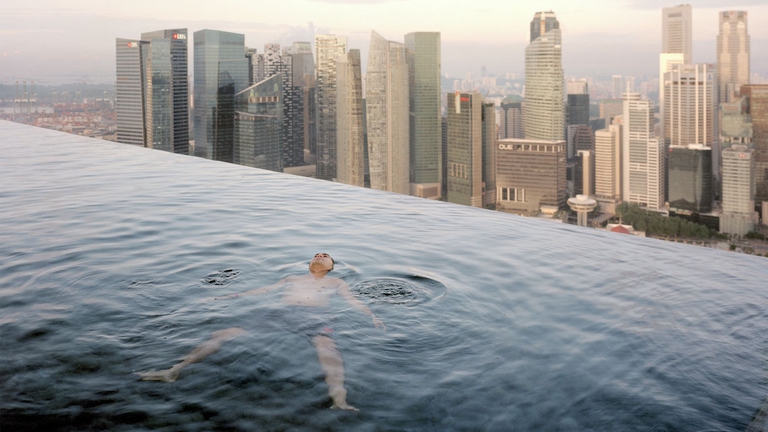
Costa Rica celebrated its first same-sex marriage when two women, Alexandra Quiros and Dunia Araya, celebrated their wedding: an “extraordinary moment”.
The wealthiest 1% of people hold more riches than the rest of the world combined, according to a report released by aid and development NGO Oxfam. The announcement comes ahead of the 46th annual World Economic Forum, which will take place in Davos, Switzerland, between 20-23 January, bringing together top business and political leaders to
The wealthiest 1% of people hold more riches than the rest of the world combined, according to a report released by aid and development NGO Oxfam. The announcement comes ahead of the 46th annual World Economic Forum, which will take place in Davos, Switzerland, between 20-23 January, bringing together top business and political leaders to discuss the world’s most urgent challenges, including income disparity. This issue is also the subject of 1% Privilege in a Time of Global Inequality, a book curated by Myles Little, photo editor at Time Magazine. It features images from over a dozen countries taken by some of today’s best photographers, examining the incongruities of extreme wealth gaps and using the language of privilege to critique inequality.
The richest 62 people (of which only 9 are women) have as much wealth as the poorest half of the world’s population. Using Credit Suisse data collected in October 2015, the Oxfam report highlights the worrying pace at which wealth concentration is growing: last year the richest 80 individuals owned as much as the bottom 50% and in 2010 this number was 388. Whilst global inequality decreased between 2000 and 2009 it has increased every year since. 2015 is the first year in which the richest 1% owns more than the other 99%, ahead of Oxfam’s prediction that this would occur in 2016. A sad achievement in stark contrast to the halving of the proportion of people living on less that $1.25 a day between 1990 and 2015 under the banner of Millennium Development Goal 1, part of the global agenda that guided the work of the United Nations for the past fifteen years.
The poorest half has lost a trillion dollars (imagine twelve zeros) in the last five years. In contrast, the top 62 are over half a trillion dollars richer than in 2010. Growing inequality is attributed to the widening pay gap between richest and poorest, which affects women in particular given that they make up most of the world’s lowest paid workers, and tax dodging. The latter has cost developing countries $100 billion in taxes every year according to Oxfam. In his contribution to 1% Privilege in a Time of Global Inequality, Nobel Prize winning economist Joseph Stiglitz points out how “for the past few decades, the economic elite, who have the greatest political clout, have pushed for a framework that benefits them at the expense of the rest”.
Closing the wealth gap “happens in one of three ways: either through revolution, higher taxes, or wars”. These the words of billionaire Paul Tudor Jones II expressing the imperative to tackle global inequality which, according to Stiglitz, “stifles economic growth by rendering the economic system less stable and less efficient” and “threatens the vibrancy of a country’s democracy as power becomes concentrated in the hands of a select few”. Oxfam points to the need for governments to increase wages, narrow pay gaps including gender ones, tax wealth rather than consumption, limit lobbying and fight tax dodging. The ostentatiousness of excess and struggle of deprivation highlighted by Little’s selection of photographs confront us with the injustice inherent in a system based on an increasingly unbalanced distribution of resources. Stopping this trend will require nothing less than contrasting this system.
1% Privilege in a Time of Global Inequality is published in English by Hatje Cantz (2016) and can be purchased here.
Siamo anche su WhatsApp. Segui il canale ufficiale LifeGate per restare aggiornata, aggiornato sulle ultime notizie e sulle nostre attività.
![]()
Quest'opera è distribuita con Licenza Creative Commons Attribuzione - Non commerciale - Non opere derivate 4.0 Internazionale.
Costa Rica celebrated its first same-sex marriage when two women, Alexandra Quiros and Dunia Araya, celebrated their wedding: an “extraordinary moment”.
On top of a 2.4 million dollar compensation, the indigenous Ashaninka people will receive an official apology from the companies who deforested their lands in the 1980s.
From Italy to the United States, workers in the logistics and delivery sectors are protesting to demand better sanitary conditions to protect themselves from Covid-19.
The pandemic and its restrictions are affecting everyone, without exceptions. However factors like housing, income inequalities, gender, access to technology and working conditions are influencing how people experience the health crisis.
In the midst of India’s coronavirus lockdown, two dozen people lost their lives in a desperate bid to return home: migrant labourers forced to leave the cities where they worked once starvation began knocking at their doors.
Apple, Dell, Microsoft and Tesla are among the tech companies named in a lawsuit brought in the US by the families of children killed and maimed in cobalt mining activities in the Democratic Republic of Congo.
We, the people is Survival’s 2020 calendar, which features the winners of the photography contest showcasing images of the world’s indigenous peoples.
Un violador en tu camino – the rapist is you – is an anthem protesting the impunity of gender-based violence. It began in Chile and has become a global flash mob, bringing people to the streets and resonating all over the world.
Abiy Ahmed was awarded the Nobel Peace Prize for reaching peace with Eritrea. Yet, Indigenous groups in Ethiopia’s Lower Omo Valley have been abused by security forces, a fact that the prime minister must address, says the Oakland Institute.








